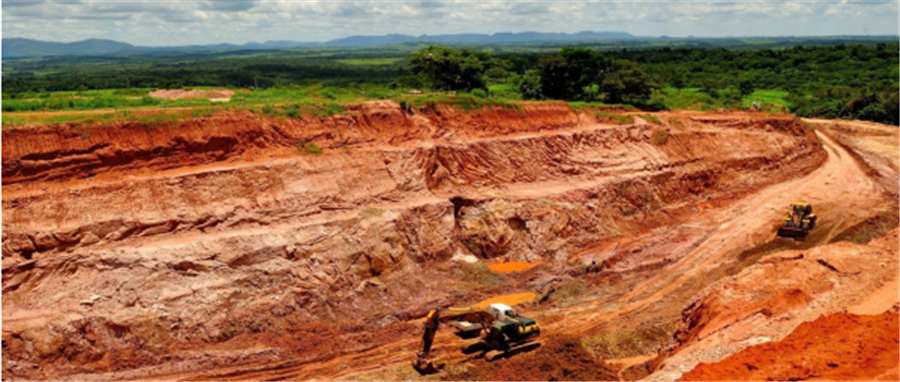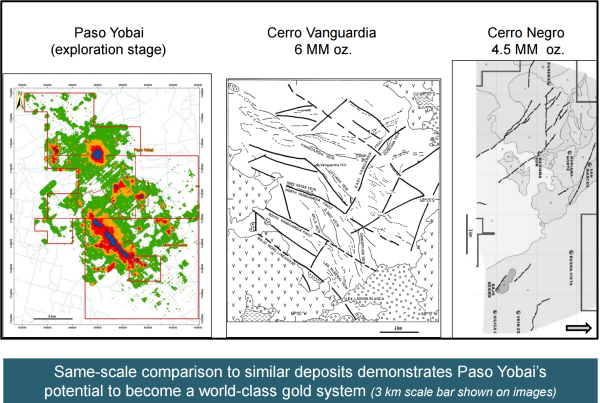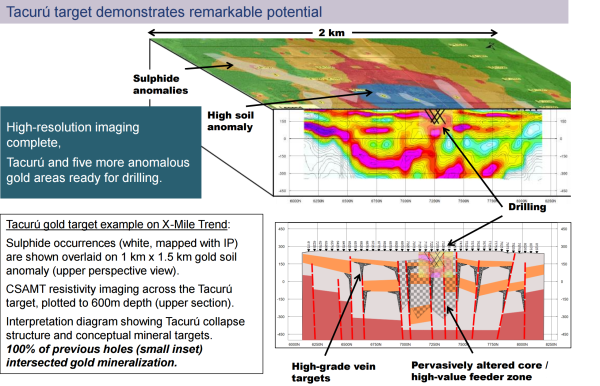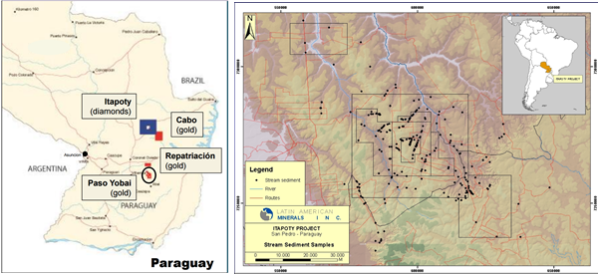Palisade Mine Tour II – awakening a sleeping giant: District size gold in Paraguay

Who Is Latin American Minerals (TSX-V:LAT)
Latin American Minerals (TSX-V:LAT) is a misunderstood “red-haired orphan”, who managed to produce some gold in Paraguay. Don’t bother wasting your time looking at the website for more info, it’s pretty vague… but LAT has a new management team and a new Board, so this will all change soon.
Palisade had the pleasure of sending our Technical Team to site for a little due diligence, and wow were we surprised with what this little cafeteria loaner had to offer. We were so impressed, we invested!
What Happened?
Much to our surprise, this little company has heaps of history. It’s been around since 2006 and has devoured upwards of $20 million. All its assets are in Paraguay, a very mining-friendly jurisdiction that we don’t hear much about, quite simply because nothing happens there; except for farming, eating, and drinking copious amounts of mate (local caffeine drink).
The company was formed around a ground package in the prolific artisanal gold district known as Paso Yobai. For the better part of the last century locals have been mining the X-mile trend and Discovery trend of epithermal gold veining; some pits go dangerously deep and some are quite shallow. LAT owns a fairly large piece of this trend.
(Gold in the soil (left) showing targets, Mag Map (right) reduced to the pole. Keep in mind the map lacks a scale bar, but end to end spans over 20 kilometers. The X-mile trend is exactly that – Discovery alone is over 7 kilometers long of mineralization. The Independencia Mine is only 500 meters of this trend.)
In the beginning, like any good, responsible gold company would, LAT embarked on an aggressive soil sampling campaign and identified remarkable, property-wide targets. These targets were followed up with trenches to further hone in on the mineralized zones, and the closest one, “Independencia”, was drilled right away. And just like that, LAT started pin-cushioning Target #1 and basically stopped there.
Did they run out of cash? No.
Did they hit anything good? Yes.
Did they do a 43-101 compliant resource calculation? Nope. So what did they do? For all of you non-risk takers out there cover your eyes…. THESE PEOPLE BUILT A MINE, THAT’S RIGHT, BOUGHT A PLANT, GOT HER PERMITTED, DUG UP SOME PONDS, AND THEY WERE OFF! BRING ON THE CASH BABY!
Now before you all say “Yep that’s what you do, I’ve been saying it for years. Screw drilling! If it’s good, you mine it like they did in the good old days” Whoa cowboys! Hold the donkey, this thing was a cash-hemorrhaging disaster. The 5 tonne per hour milling circuit was inadequately designed and overpriced, and the company also had a fully operational on-site assay lab, outfitted with eye scanner security like a Mission Impossible movie. A total ‘cart-before-the-horse’ story.
Folks, this was a complete and utter shame. If that wasn’t bad enough, LAT took a $700,000 bank loan and received its permits in 6 months for heap leaching. And that was it, the Hail Mary. Heap leaching under tropical rains for the win! Nope…on top of being broke, LAT was now in debt!
Between the debt and payables amounting to CA$2.3 million, by September 2015, LAT was sitting on just 300 ounces produced from the heap leaching and its head in its hands. It had squandered loads of cash chasing the cash-flow dream… not to mention all of these fantastic exploration targets and other properties virtually untouched. No one wanted to touch them or deal with the mess. In come Basil Botha and Michael Hepworth with some cash and a plan. Here’s where things get interesting…
The Reset Button…Firmly Pushed
Trading at a penny, with no cash and CA$2.3 million in liabilities, the boys (Michael and Basil) stepped in with shareholder support to wipe out the board and take charge of management, also cleaning up the balance sheet with an injection of ~$1.6 million.
Operations were reduced to a simmer, and consultants were brought in to assess and rectify the model. Fortunately, Michael and Basil had inherited a lot of good with the bad, including over 175K tonnes of ~0.5 g/t low-grade stockpile sitting 200 meters from the plant; significant tailings potential; and not to mention another 4 kilometers of mining prospects to extend the Independencia pit.
There were a lot of moving parts. Current liabilities were reduced to ~$1.1 million, with ~$500K of that in bank debt, and the rest retooled and spread out in a small payment plan. The fires were put out, there were a couple of new sheriffs in town, salary free if I might add!
The Deposit And Material
Without getting too technical, the host rock material is saprolite, containing quartz veining (oxidized rock or “oxide” – red dirt). Gold pans are used for grade control.
(Examples from Paso Yobai. (Top) Free gold in saprolite panned at the pit. (Bottom left) Gold in quartz vein fragment. (Middle) Gold in hematite. (Bottom right) Example of trench in saprolite)
What makes this deposit special is the coarse free gold. With a zone in the pit approximately 10 to 20 meters wide at 2.5-5.0 g/t – this is significant. This saprolite (oxide) is on average about 30 meters deep until you encounter hard rock (sulfide). The zones pinch and swell along the trend as a steeply dipping package of braided quartz and hematite veining. The pit is shown to put the operation in perspective. It’s important to remember that in this type of deposit the top ~30 meters is free dig, which means no blasting or crushing is necessary. This means it’s cheap!
(The overall layout of the Independencia mine with 3D surveys of the pit, and stockpiles, with respect to the plant (Planta)).
Mineral Processing
Again, to simplify this as much as possible, the current 5 tonne per hour (tph) configuration goes as follows:
Material scrubber (5 tph) – Breaks up material into slurry
![]()
Ball mill (5 tph) – Crushes up material into a pulp
![]()
Centrifugal concentrator (2 x 50 tph) – Creates a concentrate – separating light from heavies by spinning like a washing machine
![]()
Shaker table – Further concentrates the concentrate
![]()
Vat leach – Uses a pool of cyanide to dissolve gold into solution
Now we must remember that LAT was panning as a method of grade control, and in actuality 80% of the material is red dirt/clay saprock containing free gold, and only 20% hard rock that required crushing.
So instead of feeding 100% of this material into a 5 tph ball mill to be pulverized, perhaps most of that gold bearing clay can be removed first, then the hard bits screened off to be sent to the ball mill for crushing?
Eureka! That’s the plan, folks! Vat leach the concentrate only after separating out most of the free gold! We’ve just increased throughput to ~30 tph by adding two components – a log washer and a vibrating screen, all for a grand total of ~$500K in just 90 days.
Note: heap leaching did not work for this material composition because the clays needed to be mixed with cement to allow for the cyanide solutions to permeate the heap. Mix that with some random tropical rain and you have a pretty gross heap leach mess that takes 200 days to leach instead of 20.
So That’s It? That’s The Master Plan? The Huge Value?
Not even close!
Even if you forget about this production stuff totally, lets draw your attention to a few points and a couple of maps:
Paraguay – Excellent jurisdiction. Heap leach permit in 6 months! Where else can you do that?
Cash flow potential – G&A and drilling costs will be covered completely by a small production
Optionality – Paso Yobai has massive discovery potential. Almost all efforts and cash were spent on the Independencia area, other areas saw little to no love
Other properties – From a massive diamond property to some very grass roots gold properties, LAT has enough on its exploration plate for five companies.
All of this for a C$2.5 million market capitalization.
Paso Yobai is huge – several mines could be found here and only a postage stamp has been drilled. Miles Rideout, a world class geophysicist, has spent a lot of time and resources further defining targets, using a plethora of geophysical survey techniques to identify drill targets. Let’s look at some analogues:
Diamonds, Gold And Real Exploration?
Perhaps one of the more interesting additions to the LAT story is the Itapoty diamond story. Completely shelved during the companies’ production fervor, we felt this is a story worth telling. For the better part of two years some incredible elbow grease geology was being done to follow up on a story of diamonds coming out of the river in a particular district in Paraguay. Hence, Itapoty means “pretty stone”.
This project was developed through the lost art of stream sampling: blocking out a massive area and sampling every river and creek panning for gold and screening for diamonds. This is done so that the explorers can hone in on specific areas where sources may be found.
Three of LAT’s projects were defined by this method. 2 gold (Cabo and Repatriacion); 1 diamond (Itapoty).
Preliminary work on Itapoty has been excellent, and it has never seen a drill. The other gold projects have been refined in the same fashion and have also not been followed up with trenching, soil sampling, drilling, or anything. Plenty of opportunity to develop low cost targets!
Summary
LAT has so much to offer with a fresh new management team equipped with production expertise and a new formula. There is a better than good chance that Michael and Basil will turn things around on the production front.
With a bottom firming up on gold, we find it necessary to seek out these little stories with huge potential and throw them into our investment basket. Latin America Minerals is one drill hole and a quarter of production away from being in the spotlight. The project has its risks but we think it’s a pretty good bet!
Disclaimer:
Palisade Global Investments Limited holds shares of Latin American Minerals. The information contained in such write-ups is not intended as individual investment advice and is not designed to meet your personal financial situation. Information contained in this report is obtained from sources we believe to be reliable, but its accuracy cannot be guaranteed. The opinions expressed in this report are those of Palisade Global Investments and are subject to change without notice. The information in this report may become outdated and there is no obligation to update any such information.
{{ commodity.name }}
{{ post.title }}
{{ post.date }}













Comments